|
Old Timers’ Tales of Fillmore
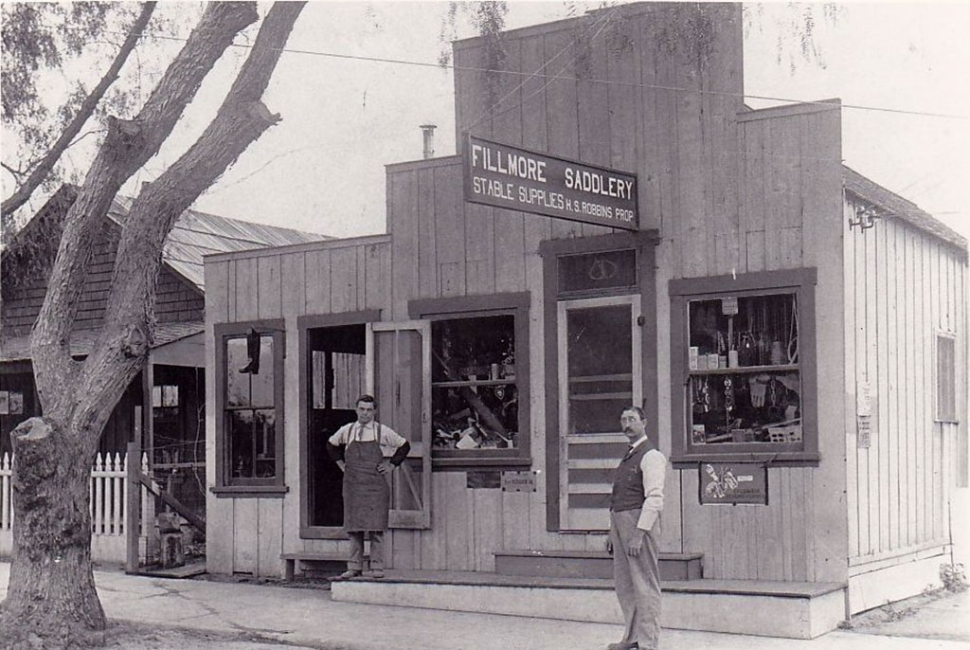 Fillmore Saddlery. Photos courtesy Fillmore Historical Museum. By Anonymous — Wednesday, March 31st, 2021
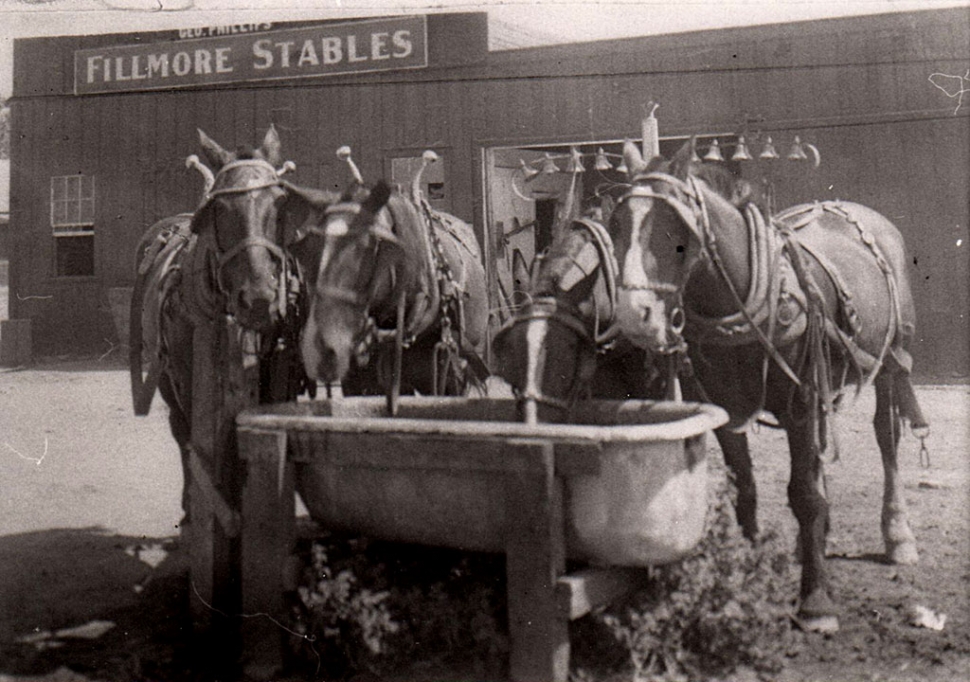 Bathtub trough for the horses. 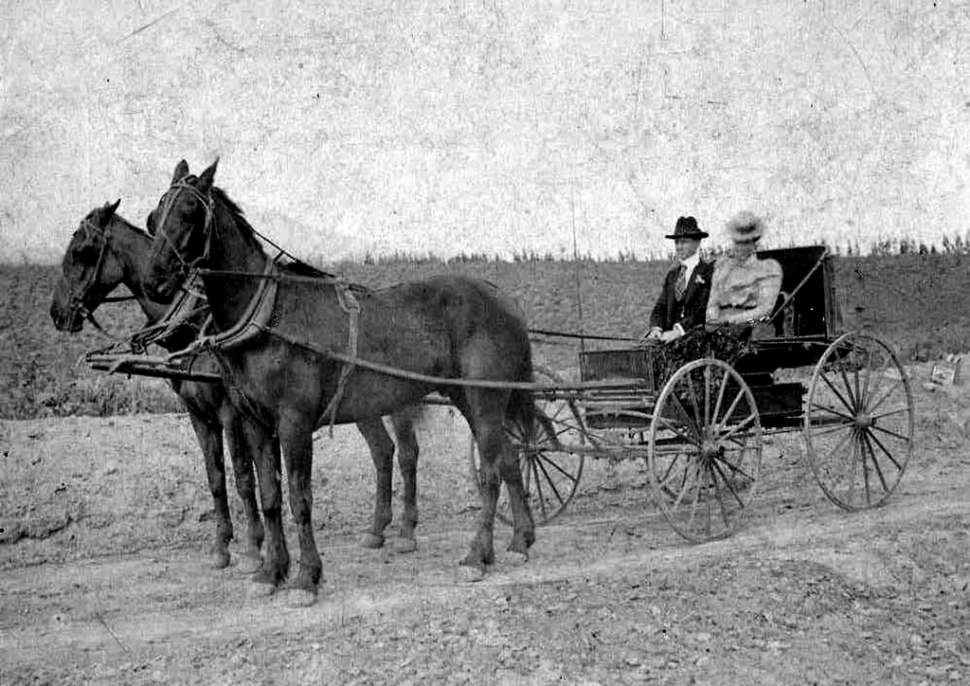 Cyrus and Elvira Kenney out for a ride. 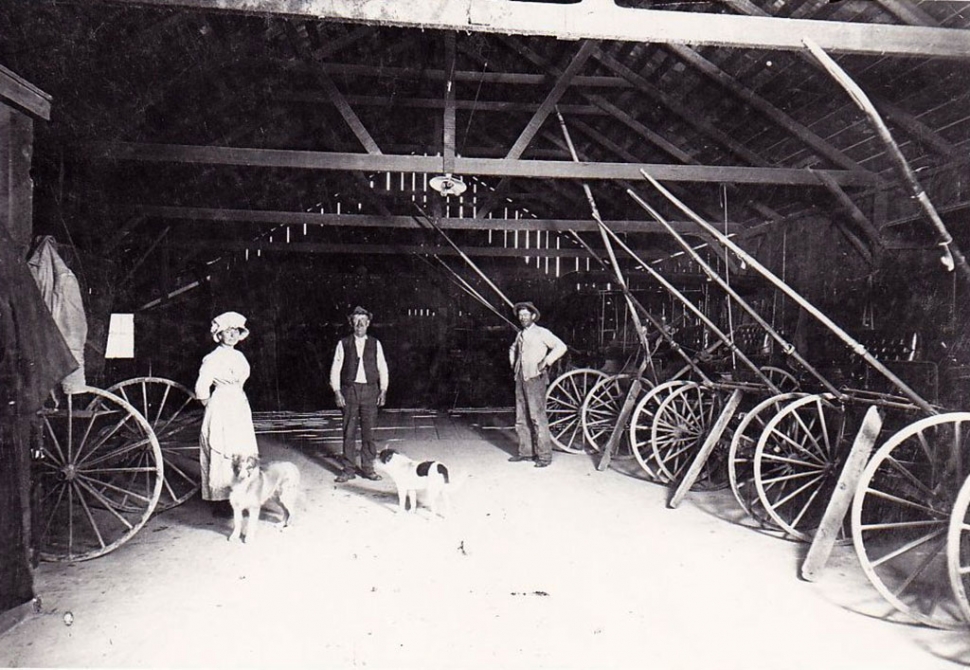 Interior of Moore’s Stables owned by Billy Moore along with all his rigs available for rental. 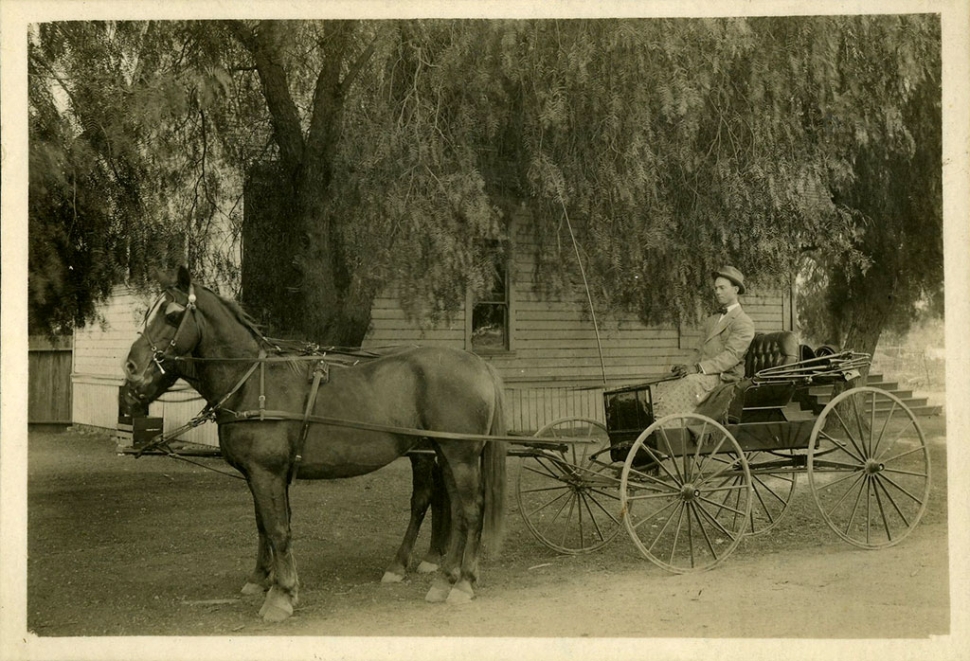 Rush Ealy with his fine rig. Courtesy Fillmore Historical Museum Last week’s story mentioned the Star Stables, but it was not only the only stable in Fillmore. The following is an extract from Edith Moore Jarrett’s book, Old-Timers’ Tales of Fillmore. Old-Timers’ Tales of Fillmore In 1899, Jack Trotter advertised his livery stable as “the only one in town.” Jack Casner started his Fillmore Stables in 1904 and it was going strong in 1911 in spite of Model Ts. By then Billy Moore was advertising his stable as “opposite the Southern Pacific Depot,” and Bill Elkins, oldest son of Judge Elkins, had his horse rental on Santa Clara Street with a watering trough made of an old bathtub with legs. The mystery there is why anyone would discard a real bathtub when most of us were still using galvanized washtubs on Saturday nights. That bathtub could have only come from the saloon or pool hall on Main Street that had burned down, for those establishments advertised hot and cold baths available at any hour. There was always a blacksmith, too, under a spreading peppertree on Main Street and Hugh Robbins at his saddlery was announcing in 1911 that he’d oil your double harness for $1. Then in 1915 L. L. Warren, with his livery stable, saw the graffiti on the wall and, as a footnote to his ad, offered a Dodge and driver for rent as well as horses. The next year he advertised Dodges first, and the horses ran second. Our first Hertz. A later constable, Owen Miller, had long done a business renting packtrains to the city folks who wanted to go up to the Sespe Hot Springs to soak a bit; and that went on for many years with no competition from cars, nor from a monorail, either. You’d think those dusty, bumpy roads would have discouraged folks from any travel but on train. Not so. Judging from Jack’s hay bill for 100 tons at a time, people rented his rigs for most any event that took them out of town even after 1911. Casner had 17 one-horse buggies, 4 surreys, 4 buckboards, 2 big four-seater tallyhos ("tally-ho" can describe a large coach or a light passenger vehicle without roof or sides used for sight-seeing), as well as 4- and 6-horse teams that hauled oilfield supplies or gypsum from Grimes Canyon to the plaster mill. His buggies were Fireflys, Babcocks, or Studebakers, and he always sent along a lap robe and a new buggy whip. Once he sent 20 rigs to Oxnard for some sort of celebration and the young bucks often rented one on Saturday night for some fun in Oxnard after local option had closed all the other saloons in the county. You could drink and drive then. The horses never touched the stuff. Casner had 10 rigs at Sulphur Mountain Springs near Santa Paula on summer Sunday afternoons. The charge was $2 for Sundays, or $1.50 for Saturday night, and you had to make your reservation before Saturday or get left behind. The traffic went both ways, too, for when Fillmore had a big July Fourth celebration or a hot baseball game, Jack said, there could 100 extra rigs here from all around the county. “Maybe they get there a little faster these days,“ said Jack n 1934, after Model Ts had put his livery stable out of business “but anybody who never wrapped the lines around the whip on a moonlight night and let the horses find the way home simply doesn’t know what he missed.” Ray Ealy would have agreed with Jack. In 1910, even though cars were beginning to come in Ray had a surprise for Fillmore. He had raised a team of matched bays and had just gotten latest thing in buggies. It was a convertible model, black with lots of delicate red striping and red wheels. All the girls simply swooned when they saw that rig, for a light buggy like that really needed only one horse and they knew it. Ray had topped all the other fellows with his horsepower rating. Who cared if the moonlit road was dusty and rocky? Perhaps some of today’s driverless cars will eventually rival Queenie, but the romance and pace of a horse and buggy can’t be matched. |
